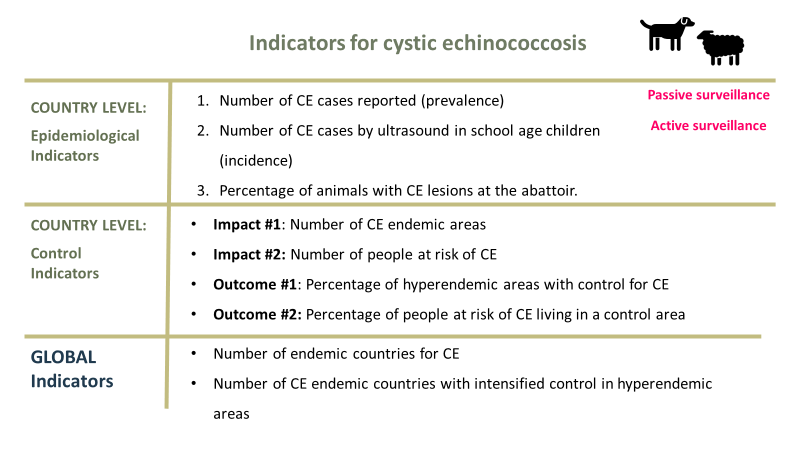Improving surveillance data on cystic echinococcosis
Surveillance data is key to understand the disease epidemiological situation and taking action in the risk areas, and for setting up priorities. Data is also necessary to monitor the progress of interventions and evaluate the outcomes of control actions.
Indicators are specific variables that assist with the data analysis and provide tools for health authorities and people involved in disease control.
WHO has defined a new set of indicators at country and global level for CE and is developing reporting systems to guide and assist the countries on data collection and reporting.
At global level, the indicators are 1- Number of endemic countries for CE, and 2- Number of countries with intensified control in hyper endemic areas. An hyperendemic area has been defined as an area with an annual incidence of 5 human cases/100,000 people.
At country level there are epidemiological indicators and control progress indicators. The epidemiological indicators include a combination of passive and active surveillance. The control indicators include impact and outcome indicators.






